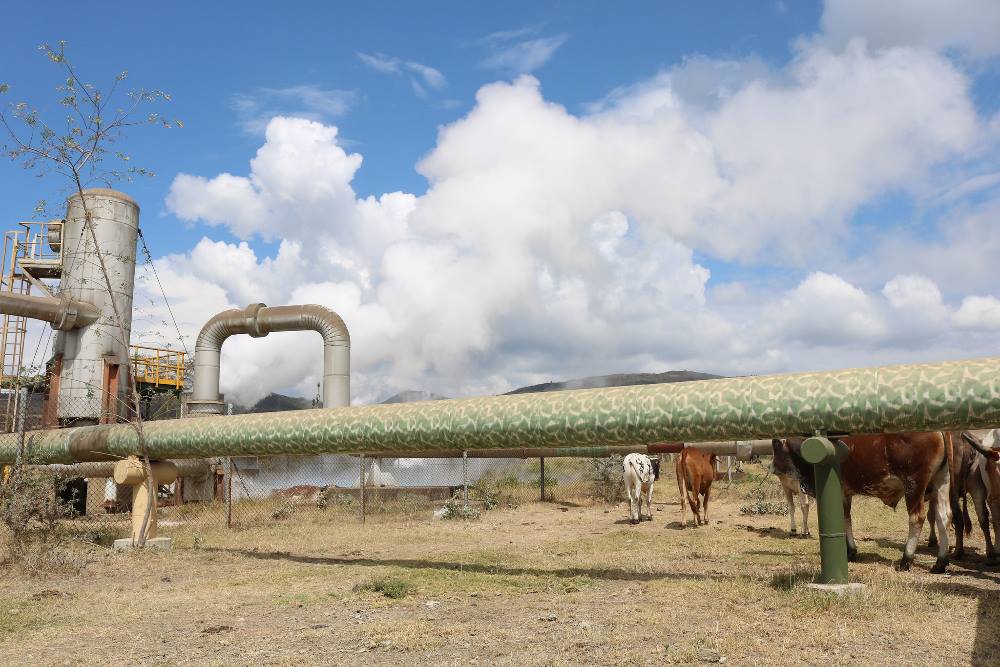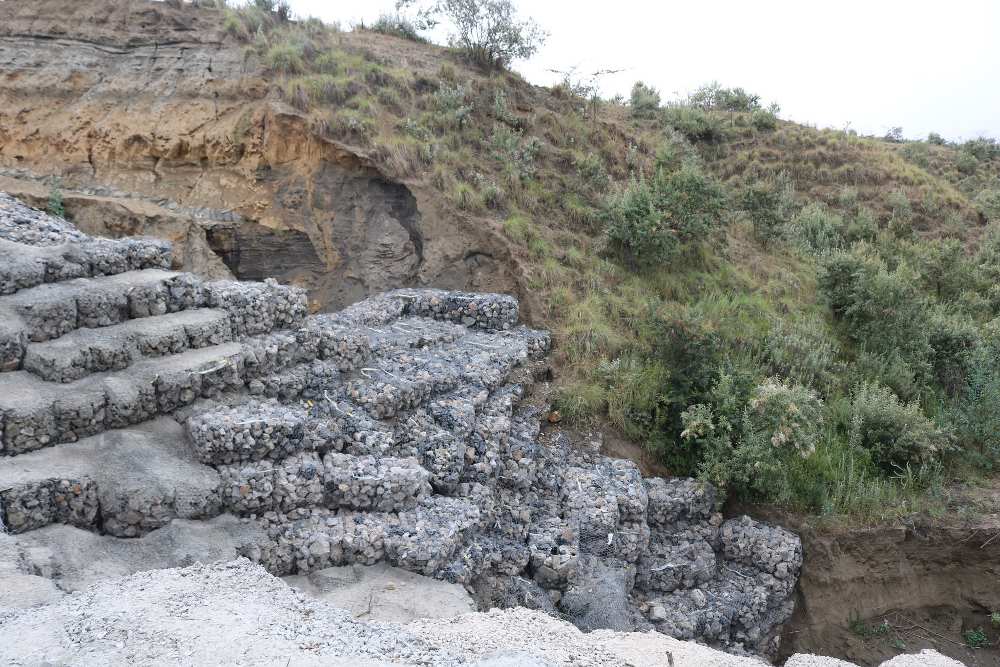
With a rapidly developing economy, Kenya aims to quench the country’s power thirst by producing 10,000MW of clean energy, with a major emphasis on geothermal production. Kenya’s ambitions to become a clean energy powerhouse are driven further by massive global funding to mitigate climate change.
Geothermal power is considered both clean and renewable, thus guaranteeing returns to investment. But in Kenya, geothermal resources are found mostly in places where there are already existing contestations over land use and ownership. Ol Karia is one such place.
The struggle over the ownership and control of Ol Karia, a rangeland landscape in the Great Rift Valley lying to the south of Lake Naivasha, is multi-layered and dates back to pre-colonial times. It is rooted deeply in a history of land dispossessions that hemmed in Maasai people (the largest group in the area) into an ever-shrinking rangeland. The first dispossessions were carried out by colonial (and neo-colonial) settlers, and then by conservationists.
Corporations eager to extract valuable geothermal steam are behind the most recent wave of dispossessions in Ol Karia. Geothermal reserves were first exploited in the 1980s around the same time that the Hell’s Gate National Park was created, leading to the displacement of a section of the community. Since the year 2000, geothermal development has intensified, displacing more people to make way for the power plants, pipelines and associated infrastructure needed to extract geothermal reserves.
The Kenya Electricity Generating Company (KenGen), a company owned in part by the state, has been the largest investor. However, an array of other investors has provided finance to what is the continent’s largest geothermal development. The Geothermal Development Company (GDC, which is fully government-owned), has led exploration and the sinking of wells that have then been sold onto KenGen and other investors. The Ministry of Energy has since partitioned the landscape, issuing concession rights to various companies in an expansive space encompassing protected areas, sacred sites, cultural hotspots and communal grasslands.
As a result, Hell’s Gate National Park, the community-based Mount Suswa Conservancy (a revered cultural and human settlement site) and rangelands in the area are gradually falling prey to the expanding exploration and acquisition.
The development of Ol Karia IV and V by KenGen resulted in the dispossession and resettlement of residents from four villages– Olomayiana Ndogo, Oloosinyat, Oloonong’ot and Emanyatta. At KenGen’s behest, a committee comprising of ‘chairmen’ from the affected villages was constituted to represent and negotiate on the communities’ behalf. The committee exists to this day. The chairmen, duly elected by community members, rarely present a united front. Some are compromised by the opportunity to benefit from company largesse. Because of divisions within the committee, and the effectiveness of threats and intimidation by geothermal backers against village residents, efforts to negotiate a better deal for community members have fallen flat.
Many residents feel betrayed and helpless. While some welcomed a new village KenGen established for displaced residents (RAPland – shorthand for ‘Resettlement Affected Persons’-land), and the chance to benefit from new modern housing and other amenities, the majority remained disgruntled. One elder described problems relating to housing provided for RAPland residents, suggesting their design was culturally inappropriate, “How am I expected to stay with my grown daughters and sons under the same roof in this house?” He paused while also pointing out how the households are confined on small, isolated plots – a far cry from the customary layout of villages in the area.
KenGen’s offer of housing and plots for relocated villagers acted as a sop to still the dissenting voices. But it was not long before grievances emerged around the resettlement area itself – a 1,700-acre site on the rugged lower slopes of Mount Longonot. The site is bisected by a number of deep gullies that are prone to erosion during seasonal rains, making it difficult to move around the village. Residents also complain that the area has a high wildlife population that preys on their livestock. Other problems described by residents include scarcity of water, poor transport links to towns that are too distant to reach on foot, and the lack of work and livelihood opportunities. While a new water tank was provided, some residents point out that it is too small to meet the demands of a growing population.
A section of the community has since petitioned the World Bank, the lead financier of the 158MW Ol Karia V geothermal project. The World Bank team mediated a memorandum of understanding underpinning KenGen’s commitment to fulfil its part of the bargain – to provide the requisite social amenities to RAPland residents. As the 26-point agreement ended in 2018, a majority of residents in RAPland felt that the company had reneged on many of its commitments.
KenGen continues to roll out plans to expand geothermal production at Ol Karia. On 3rd December 2018, Kenya’s President Uhuru Kenyatta commissioned construction of an 83MW Ollkaria 1 Unit 6. At the same time, he emphasized the soon-to-be-launched project to construct a dry port – part of the plans accompanying the new Standard Gauge Railway that is being constructed on the plains nearby to RAPland.
With these large-scale investments accelerating, area residents face opportunities and threats. Experience so far shows that, while a minority may in fact manage the rupture to their lives and livelihoods caused by large-scale investments, others do not: uncertainty, division and the loss of heritage and land is the price paid by most of the local population.

A section of the community has since petitioned the World Bank, the lead financier of the 158MW Ol Karia V geothermal project. The World Bank team mediated a memorandum of understanding underpinning KenGen’s commitment to fulfil its part of the bargain – to provide the requisite social amenities to RAPland residents. As the 26-point agreement ended in 2018, a majority of residents in RAPland felt that the company had reneged on many of its commitments.
KenGen continues to roll out plans to expand geothermal production at Ol Karia. On 3rd December 2018, Kenya’s President Uhuru Kenyatta commissioned construction of an 83MW Ollkaria 1 Unit 6. At the same time, he emphasized the soon-to-be-launched project to construct a dry port – part of the plans accompanying the new Standard Gauge Railway that is being constructed on the plains nearby to RAPland.
With these large-scale investments accelerating, area residents face opportunities and threats. Experience so far shows that, while a minority may in fact manage the rupture to their lives and livelihoods caused by large-scale investments, others do not: uncertainty, division and the loss of heritage and land is the price paid by most of the local population.
